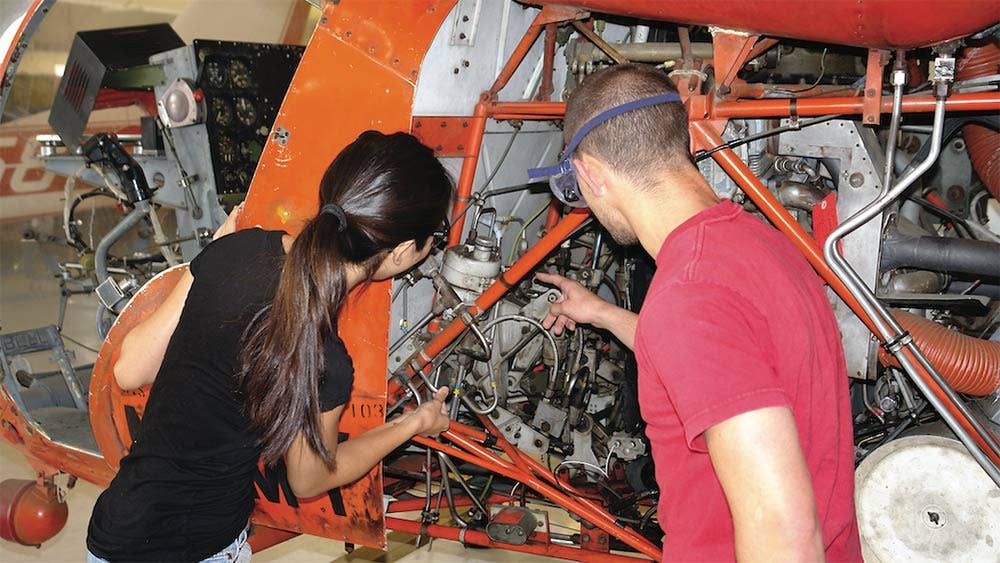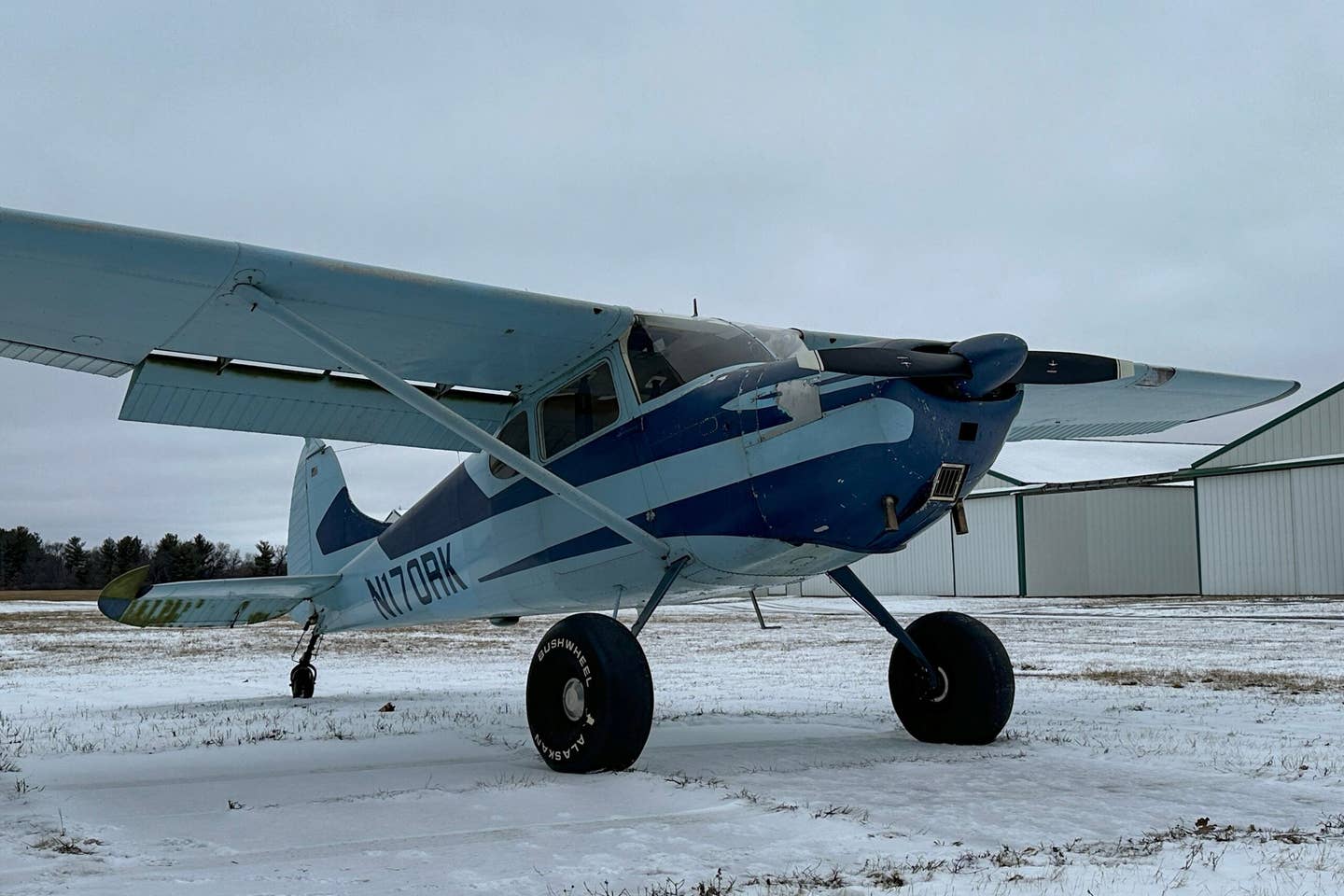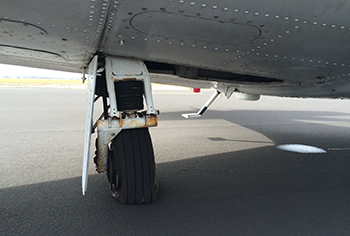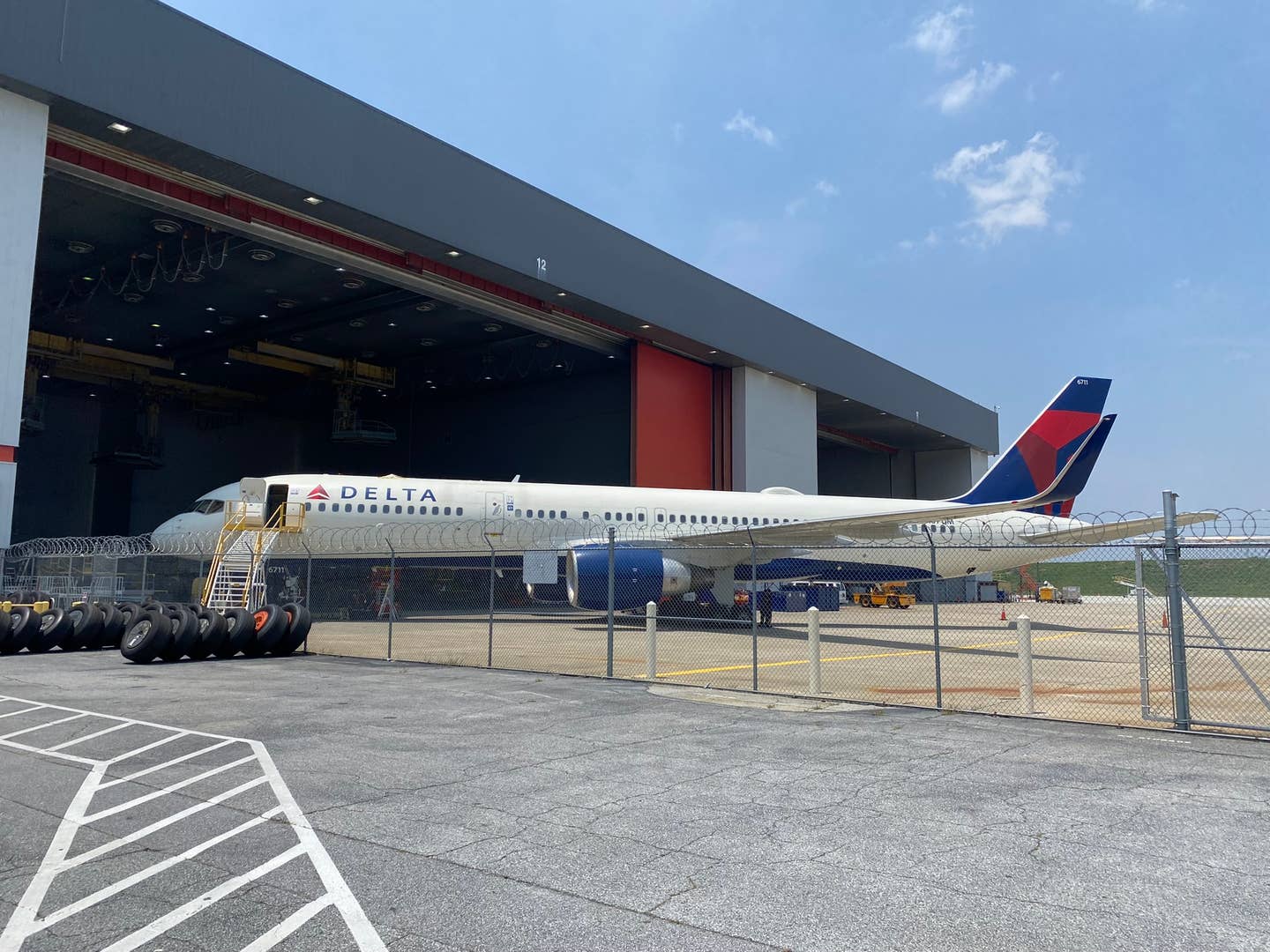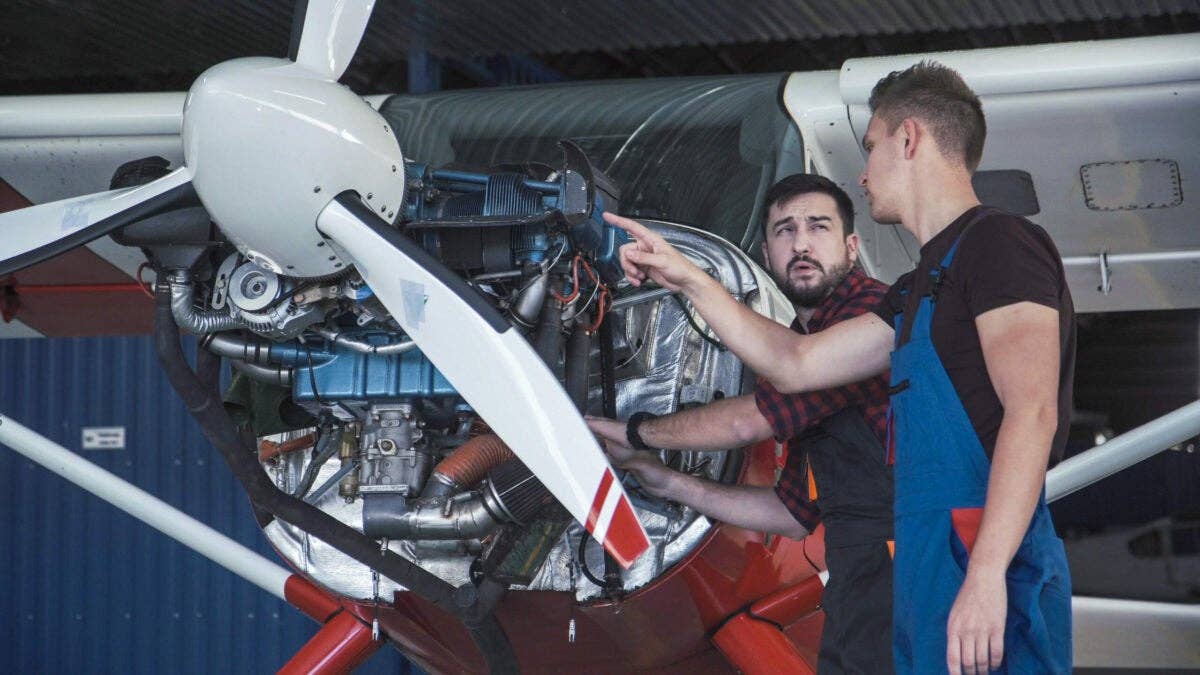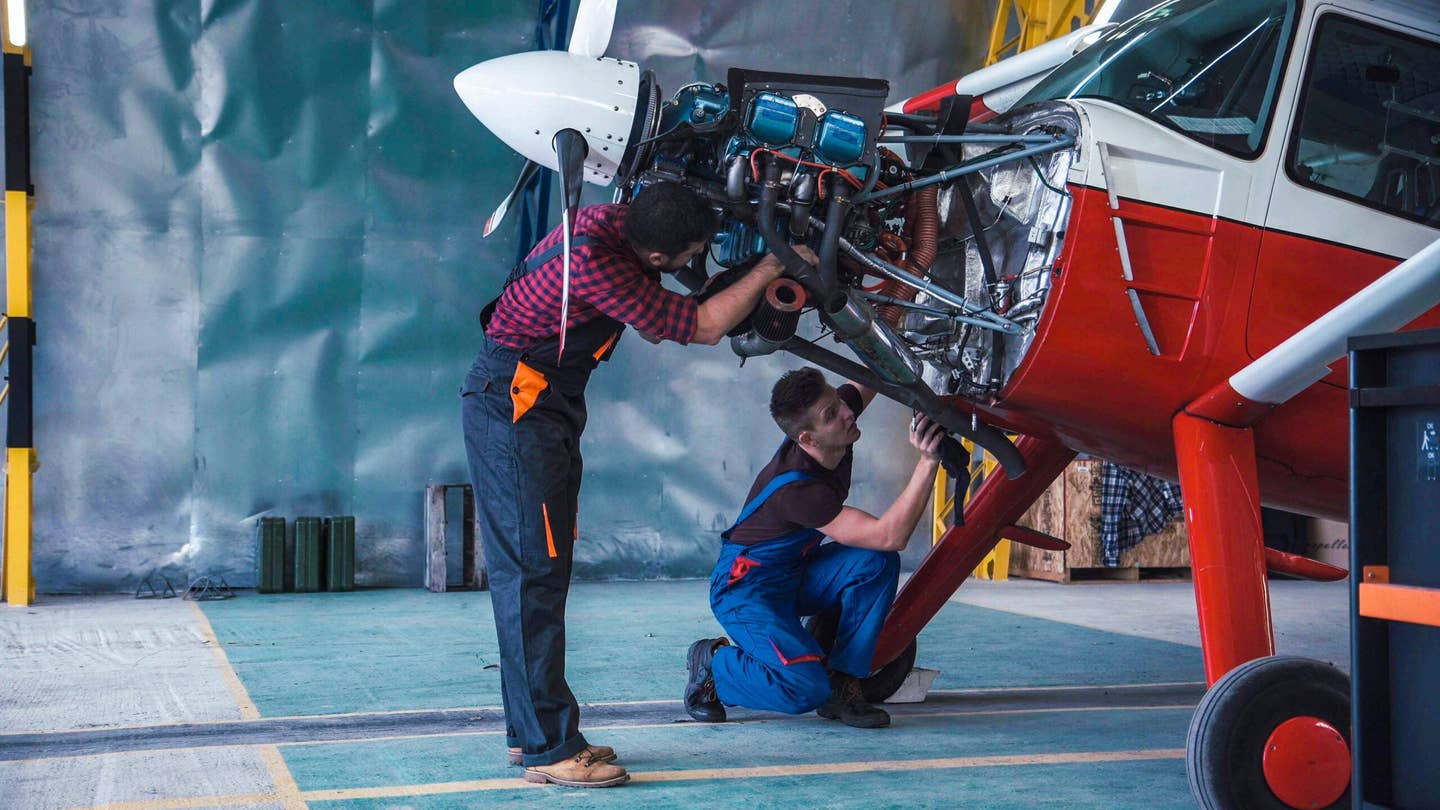Cessna 172 Offers Opportunity for Intro to Aircraft Maintenance
In addition to being affordable and forgiving in the air, the Skyhawk is easy to maintain.
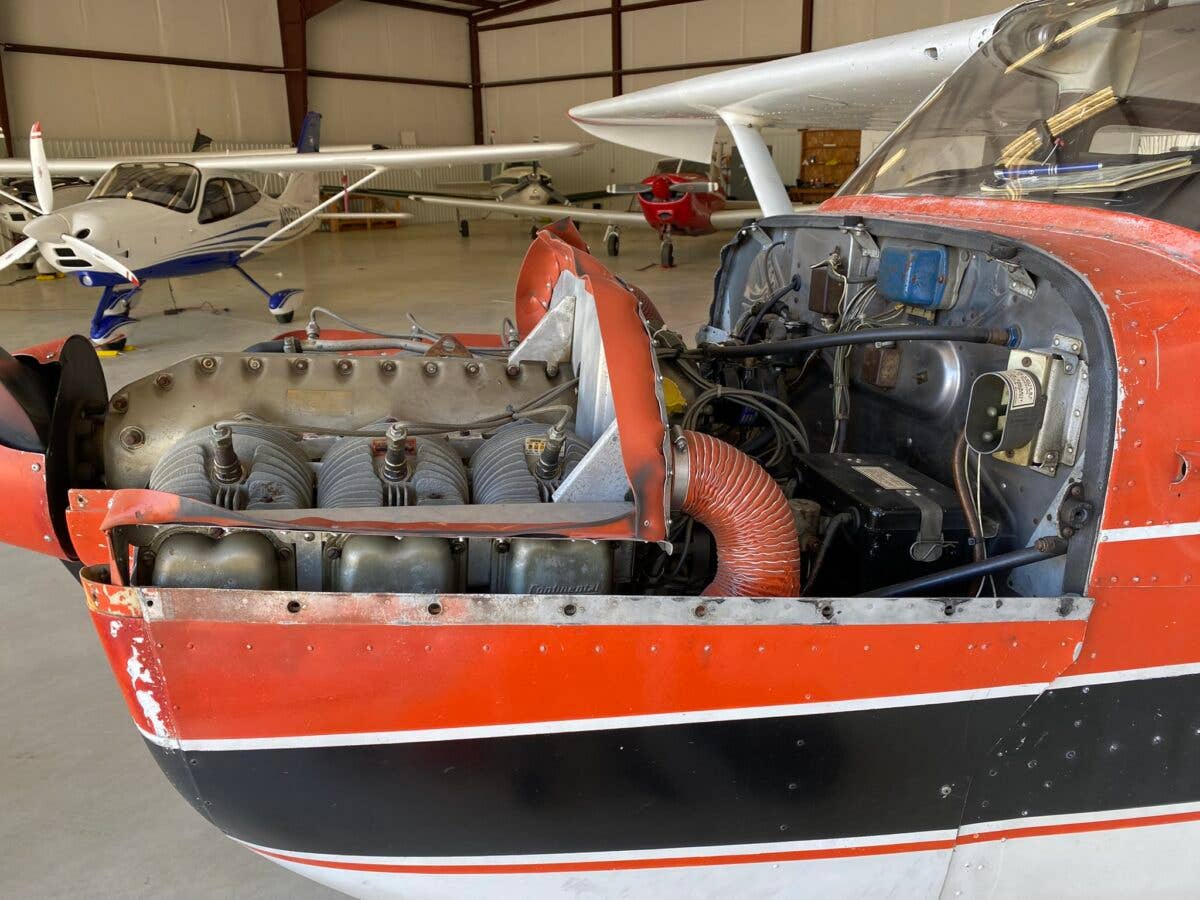
The Cessna 172 Skyhawk is a fantastic introduction to the world of aircraft ownership because it is affordable and easy to maintain. [Credit: Richard Scarbrough]
The Cessna 172 Skyhawk is a fantastic introduction to the world of aircraft ownership.
It is affordable, easy to maintain, and very forgiving in the air. Parts are plentiful—always a key consideration when selecting an airframe—and with over 44,000 produced, you are bound to find someone to provide guidance.
In September 2022, FLYING named the 172 one of the best personal aircraft, highlighting it as the “most popular training airplane in the world and one of the most popular personal aircraft ever.”
I know a 172 owner/operator, and our chance meeting waiting for coffee at the office sparked a conversation that centered on—you guessed—flying. Corey Sampson works one office over and proudly owns a 1966 Cessna 172 stationed at Falcon Field (KFFC) in Peachtree City. He is making minor upgrades, and while his 172 is a great airplane, that is no reason not to make it better. I thought, wouldn’t it be great if the readers of FLYING could come along on this journey? Well, buckle up propeller heads; we are about to taxi out.
Rules and Regulations
One question I hear a lot: “As an owner/operator, what aircraft maintenance am I approved to perform?”
FAR Part 43 Maintenance, Preventive Maintenance, Rebuilding, and Alteration; Appendix A Preventative Maintenance; Subpart C lists preventative maintenance tasks. This is no small feat, as there are 31 of them. If you, as an owner/operator, could accomplish even a portion of this, it would save you a chunk of change at the shop.
Another excellent resource is the FAA Advisory Circular AC 20-106, “Aircraft Inspection for the General Aviation Owner.” It reiterates an owner’s ability to perform preventative maintenance in Section 2. The Feds also remind us here that aircraft used in air carrier service are excluded, and would need the services of a certificated A&P mechanic.
The FAA produces separate supplemental publications to assist in your aeronautical journey. One of the better ones is “Maintenance Aspects of Owning Your Own Aircraft,” a great place to gain valuable insight into the dos and don'ts of owner aircraft maintenance. It carefully reminds everyone that preventive maintenance cannot involve complex assembly operations. Also, don’t forget to document your work in the logbook.
General Aviation Law Firm, P.C., reprinted an article from the Cirrus Owners and Pilots Association, dispensing some solid advice under “Owner Maintenance: What Can You Do?” They state, “What is legal is not always safe. Just because you could replace a side window doesn’t mean you should.”
A Day at the Hangar
Corey and I met at the hangar, and he pulled his 172 out on the ramp. After a general walkaround and preflight inspection, it was time to go flying. This is, of course, why we do what we do. There is nothing like hearing, “Let’s take her up!”
Taxing out, we tucked in behind two other aircraft waiting for a slot. We pulled onto the runway and began the takeoff roll. Once the rubber broke free from terra firma, we were in a whole new world. He let me pull back on the yoke, but I was too timid, and he took over, putting us into a steady climb.
Corey offered to let me control the rudder pedals, but quickly realizing that his Skyhawk does not hold an aerobatic rating, he reversed that decision. Remember, guys, my rating is A&P [airframe and powerplant], not ATP [airline transport pilot]. There is a difference.
Once we were back in the hangar, it was time to exercise some owner-facilitated maintenance. Corey is also an A&P, but I asked him to shed that title for the sake of this column.
We popped off the cowling, and Corey attached a hose to the quick drain valve. The warmed-up oil flowed easily, and soon it was time to service. Next came the Phillips 66 X/C aviation oil, and we drained the containers, one by one.
Corey’s O-300-D Continental engine was not equipped with a spin-on filter—it had a screen. Popping off the safety wire, and a quick visual with a flashlight revealed no metal. We were good to go, and we buttoned her up. It was then time to push her out on the ramp for a bath.
I asked Corey what owning an airplane meant to him. After some thought, he said, “Growing up, I have always been fascinated with aviation, so to own an airplane still amazes me. It gives you a completely new sense of freedom that most people don’t ever get to experience. Now I get to raise my daughter with that same sense of freedom.”
What does owning an aircraft mean to you? Please drop me a line and let me know. I always love to hear others’ perspectives.
I had a great time spending the day with Corey and his Skyhawk. It felt good to be close to the hardware. Anytime spent working on airplanes is not deducted from one’s life.

Sign-up for newsletters & special offers!
Get the latest FLYING stories & special offers delivered directly to your inbox

